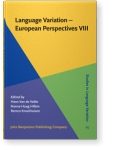Chapter 5
“Organically German”?
Changing ideologies of national belonging
This chapter examines variation in the situated meanings of the term Biodeutsche(r), a term which has emerged relatively recently as a way to refer to people who are German by descent (i.e., not of migration background). This analysis shows that use of this term reflects competing discourses about the role of ethnicity in national belonging in Germany. While the origin and many uses of the term challenge the validity of ethnicity as a basis for legitimacy in German society, some of the data suggest that it has also been adopted as a supposedly neutral term to describe a segment of the German population, which supports an ethnonational ideology.
Article outline
- 1.Introduction
- 2.German ethnicity, citizenship and belonging: Concepts and policies
- 2.1Ethnicity
- 2.2Immigration and citizenship
- 3.Discourses of belonging
- 3.1Discourses of ethnonational ideology
- 3.2Integration and belonging: Discourses of exclusion and inclusion
- 3.3Post-national discourse
- 4.The term Biodeutsche(r)
- 5.Methodology: Media data
- 6.Overview of term and its meanings
- 6.1Biodeutsche(r): Challenging ethnonational ideology
- 6.2Missing the joke: Reclaiming Biodeutsche(r)
- 7.Discussion and conclusion
-
Acknowledgements
-
Notes
-
References
